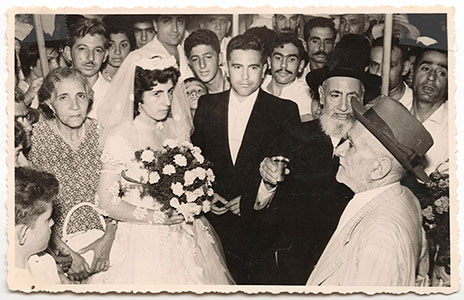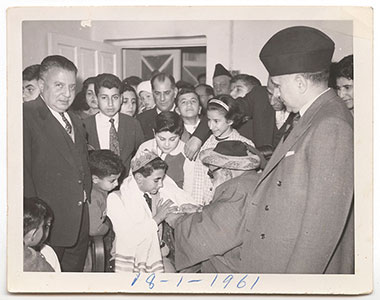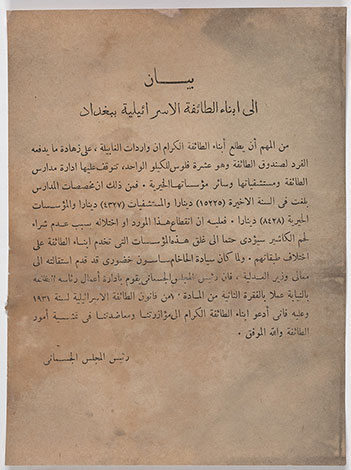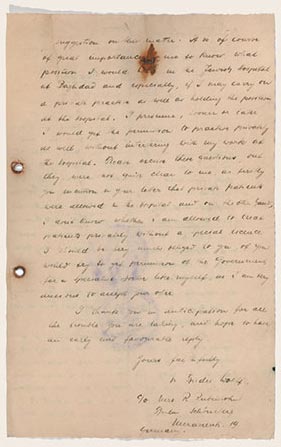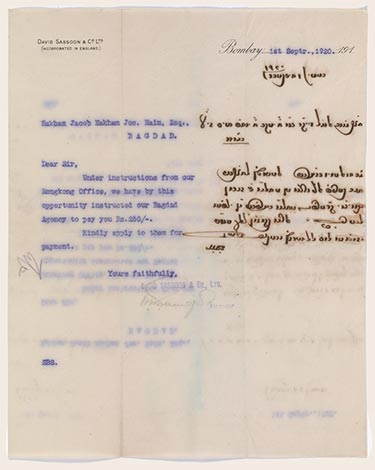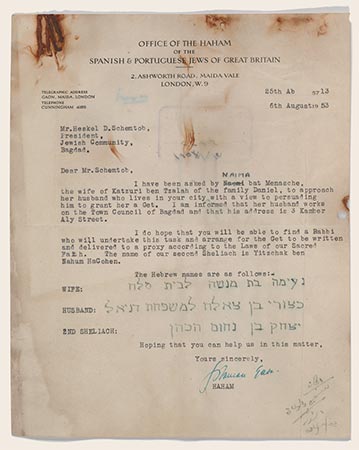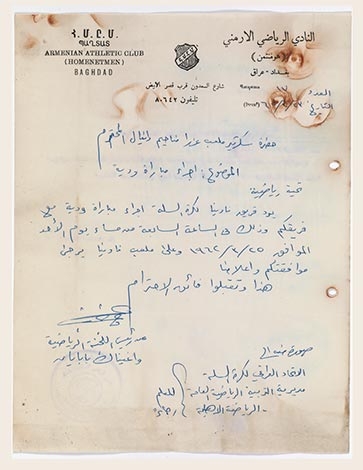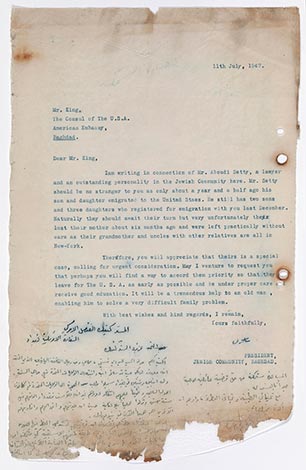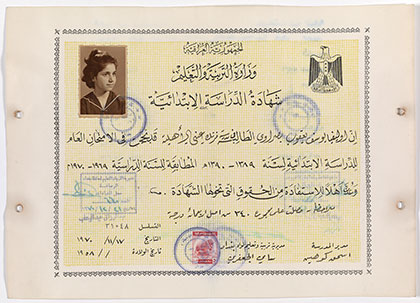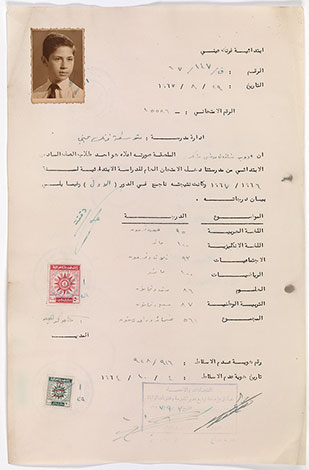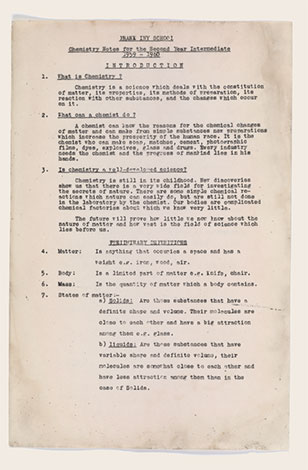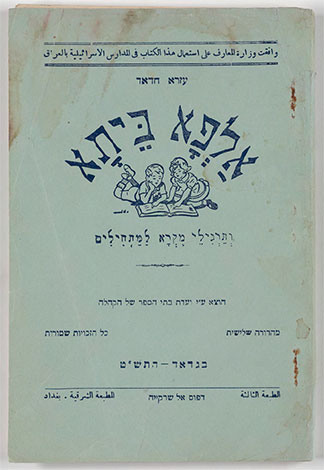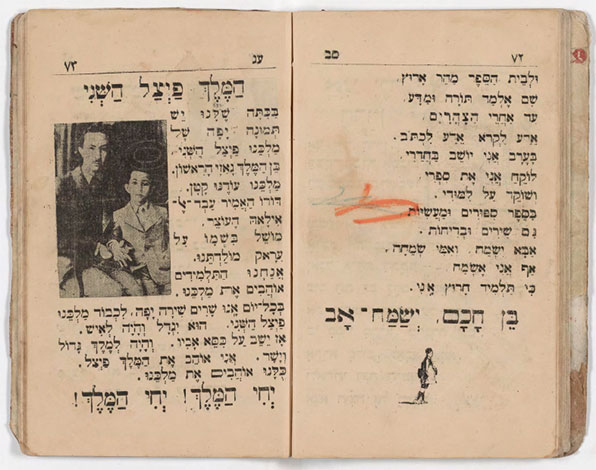On the Tigris River, about 1959. Photo courtesy of Maurice Shohet
Personal & Communal Life
For centuries, Jews were well integrated into Iraqi society. Iraq was a generally a tolerant, multicultural society, with an Islamic majority composed of both Sunnis and Shiites, and significant Kurdish, Christian, and Jewish populations. From the late Ottoman period and onward, as Iraq modernized, Jews formed an important segment of the middle and working classes—active in business, government, professions, academics, music, literature, and trades.
In 1910, records show approximately 50,000 Jews living in Baghdad, which had a population of just over 200,000. By 1949, an estimated 130,000 Jews lived in Iraq, primarily in Baghdad, Basra, and Mosul.The Jewish community of Baghdad ran a variety of religious, educational, and social welfare institutions.The recovered documents provide a vivid and unparalleled record of Baghdad's Jewish communal life from the end of the Ottoman era to the early 1970s.
Left: Wedding of Iraqi Couple, 1960. Photo courtesy of Maurice Shohet
Right: Bar Mitzvah in Baghdad, 1960. Photo courtesy of Maurice Shohet
Community Letters
Thousands of individual documents were recovered from the Mukhabarat basement including over 200 ring binders filled with letters, receipts, and other records. Here is a small selection of facsimiles of some of these documents.
Handbill Regarding a Tax on Kosher Meat in Baghdad, after 1931
An official announcement from the President of the Lay Council of the Baghdad Jewish community, this handbill asks that the community members continue to pay tax on kosher meat in order to support the community's schools, hospitals, and general charitable institutions.
Correspondence between Dr. Siegfried Wolff, Worms, Germany, and the President of the Jewish Community in Baghdad, 1933
At times, Jews in other parts of the world saw Iraq as a haven. Seeking to leave Nazi-era Germany, in 1933 Dr. Siegfried Wolff wrote community leaders inquiring about a position as a doctor in a Jewish hospital or in private practice in Baghdad. Iraq seemed to be a safe refuge at the time, but Nazi propaganda was widespread in Iraq in the 1930s, and a short-lived pro-Nazi regime ruled Iraq in spring 1941.
Letter from David Sassoon & Co. Ltd., Bombay, Regarding a Payment, 1920
As seen from the many locations mentioned in this correspondence and corporate letterhead, prominent Jewish families in Baghdad established branches of their businesses in Britain, India, and the Far East. Maintaining their financial and familial ties with Iraq, they formed an international network in which Iraqi commerce was an essential component. The Sassoons and several other prominent Baghdadi Jewish families played an influential role in the development of business and manufacturing in Bombay, Hong Kong, Singapore, and elsewhere in the Far East.
Letter from the Shamash Secondary School in Baghdad to the College Entrance Examination Board in Princeton, New Jersey, Regarding SAT Exams, 1965
After graduating from secondary school, students frequently took entrance exams for British and American universities. University studies abroad offered many Jewish young men and women the opportunity to emigrate from Iraq. Many of the over 200 ring binders recovered from the Mukhabarat headquarters were filled with correspondence and records regarding these exams and school applications.
Letter from the Office of the Haham (Chief Rabbi) of the Spanish & Portuguese Jews of Great Britain in London to the President of the Baghdad Jewish Community Asking Assistance to Persuade a Man to Grant his Wife a Religious Divorce, 1953
Iraqi Jews living across the globe maintained religious and cultural connections with their home Jewish communities.
Letter from the Armenian Sports Club in Baghdad Regarding a Request to Hold a Friendly Basketball Game, 1962
Armenian Christians formed a significant component of Iraqi multicultural society. They were frequently multilingual and had international trade connections, often prospering in commerce alongside Iraqi Jewish merchants and businessmen.
Letter from the President of the Jewish Community of Baghdad to Mr. King, Consul of the American Embassy in Baghdad, Asking for Priority for Members of the Setty Family to Immigrate to the United States, 1947
Left: Frank Iny School Certificate for Olivia Joseph Jacob Basrawi, Republic of Iraq's Ministry of Education and Instruction, 1970
Right: Transcript of Exam Grades for Edwin Shaul Shukur, Frank Iny School in Baghdad, 1967
School Records
Until the late 1940s, many Jewish schools served the Baghdad Jewish community, educating Jewish, Christian, and Muslim students in Arabic, Hebrew, English, and French. The Jewish schools were run under the auspices of the local Jewish communal structure, the Iraqi government, and international Jewish organizations based in Paris and London. The Frank Iny School was the last Jewish school to remain open in Baghdad, closing in 1973.
Ezra Haddad, Alpha Beta: ve-Targilei Mikra la-Mathilim (Alphabet: Reading Exercises for Beginners), Baghdad, 1949
Over 60 copies of this Hebrew elementary school primer were found in the Mukhabarat headquarters, the only title to be found with so many duplicates. Almost all of the copies are missing pages 73-74, which had a Hebrew text and poem declaring loyalty to King Faisal II. After Faisal was killed in a military coup in July 1958, these texts were removed.

